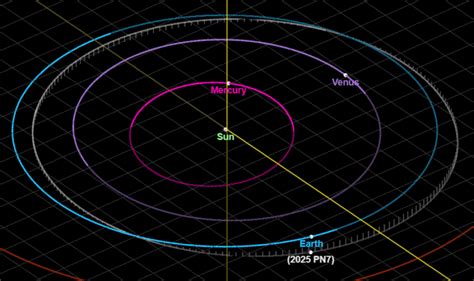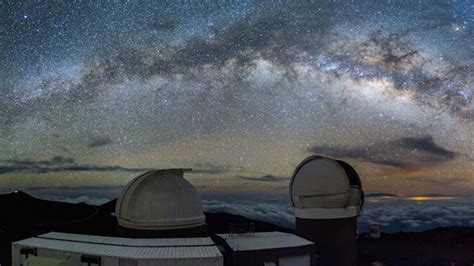
Earth's New Cosmic Companion: The Quasi-Moon 2025 PN7
Earth has a new celestial shadow—a tiny asteroid named 2025 PN7 that's been traveling alongside our planet since the 1960s, and will continue its cosmic dance until 2083. Discovered in August 2025 by the Pan-STARRS Observatory in Hawaii, this building-sized space rock (approximately 62 feet wide) is classified as a "quasi-moon"—a fascinating class of objects that challenges our understanding of Earth's neighborhood.
What Exactly is a Quasi-Moon?
Unlike Earth's natural moon, which is gravitationally bound to our planet, quasi-moons are asteroids that orbit the Sun in a synchronized path with Earth. They're not true satellites but appear to orbit Earth due to orbital resonance—a "little dance" where their orbital period matches Earth's year. As NASA's Paul Chodas explains, "this small asteroid is caught in a little dance with Earth."
These cosmic companions drift ahead of or behind Earth in their solar orbit, creating the illusion of circling our planet. Currently, Earth has at least seven known quasi-moons, with countless others likely moving undetected. What makes 2025 PN7 remarkable is its unusually long tenure—nearly six decades as Earth's temporary shadow.
A Cosmic Detective Story
2025 PN7's discovery was a feat of astronomical sleuthing. Astronomers identified this faint object through repeated sky surveys that track slow-moving celestial bodies. Its small size and dark surface made it invisible to casual observers, requiring powerful telescopes to catch the faint sunlight reflecting off its surface.
"When I first heard about PN7, my first thought was: 'Oh cool, another one,'" says astronomer Ben Sharkey, noting Earth's perpetual parade of transient companions. This quasi-moon likely originated from the asteroid belt between Mars and Jupiter, where Jupiter's gravity nudged it into a Sun-Earth resonance. Another theory suggests it could be a piece of our Moon ejected by ancient impacts—a theory supported by similar objects like Kamoʻoalewa, which shows lunar-like composition.
"They really make you reconsider a nice, orderly, static view of the solar system."
— Ben Sharkey, Astronomer
Why These Mini-Moons Matter
Quasi-moons like 2025 PN7 serve as natural laboratories for studying orbital dynamics. Their predictable paths help scientists test gravitational models, spacecraft navigation, and even asteroid-deflection techniques. They're also key to understanding how small bodies evolve near planets—a critical factor for assessing meteoroid risks and planetary formation.
The Chinese space agency is already capitalizing on this knowledge with a mission to Kamoʻoalewa, scheduled to land next summer and return samples to Earth. Such missions could finally reveal whether these visitors are lunar fragments, escaped asteroids, or relics from the solar system's infancy.
Not Your Second Moon
Despite the "mini-moon" nickname, 2025 PN7 won't brighten our nights or alter tides. It remains millions of miles away, visible only through powerful telescopes. Unlike temporary "mini-moons" (which Earth briefly captures for months), quasi-moons maintain their solar orbits while appearing to circle Earth.
As planetary scientist Kat Volk notes, these objects offer immediacy in astronomy: "The journeys of quasi-moons in the inner solar system unfold on significantly shorter timescales, providing a really fun real-world example of orbital dynamics."
The Future of Cosmic Companions
With advanced telescopes like the upcoming Vera C. Rubin Observatory, astronomers expect to discover more of these elusive objects. Each new quasi-moon reminds us that Earth's cosmic neighborhood is far more dynamic than textbooks suggest—constantly rearranged by gravity's quiet hand.
So while 2025 PN7 won't become a celestial landmark, its presence is a humbling reminder: Earth has always hosted more moons than we knew, and the cosmos still holds countless secrets for us to uncover.

Share this article
Dr. David Chen
Science correspondent with a Ph.D. in astrophysics, passionate about making complex scientific discoveries accessible to all.